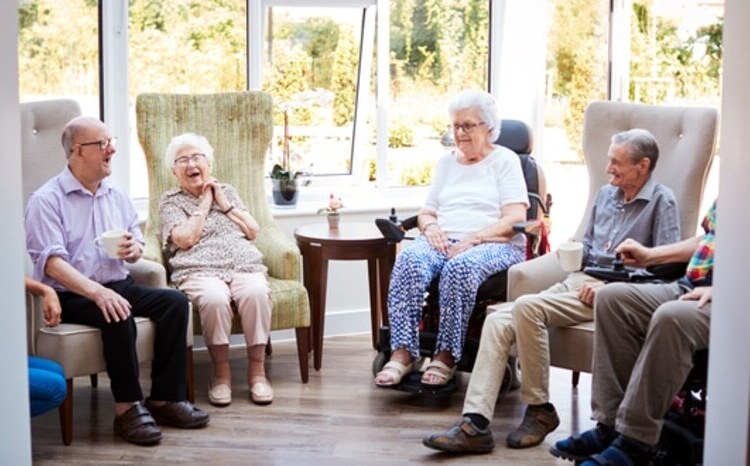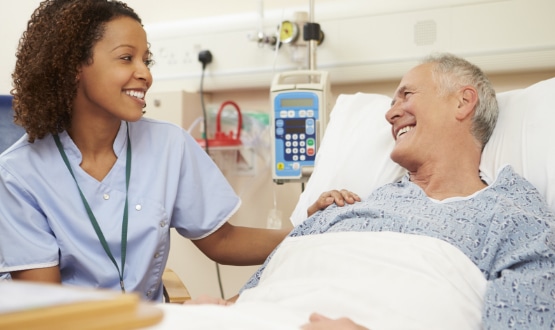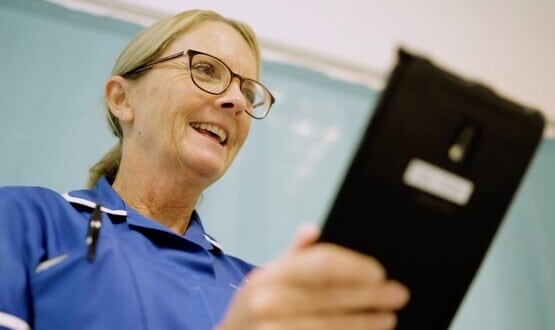Why oh, why oh, wi-fi
- 17 December 2012

Health secretary Jeremy Hunt has made a technology revolution in the NHS one of his top priorities – but how well equipped is NHS infrastructure to deliver it?
One key piece of infrastructure is universal wi-fi to deliver RFID asset tracking, bedside access to clinical apps and patient records, modern telephony services and even video conferencing for clinicians and patients.
Yet this technology is far from ubiquitous. As the former chief clinical officer for NHS Connecting for Health asked recently: “How many hospitals have an all embracing secure wireless network? Very few.
"How many hospitals routinely use their electronic patient record in ward rounds? Very few. The whole penetration has not quite happened yet.”
Getting it right
There are some notable exceptions. Trusts including Great Ormond Street and Nottingham University Hospitals have invested heavily in their wireless infrastructure and systems that enable this to be used to best effect. They are now delivering both innovation and cost improvements.
At Nottingham, for example, a study by the Association of Chartered Certified Accountants identified how moving the Hospital at Night (H@N) team from a pager-based service to one using wi-fi-enabled BlackBerry devices and tablet computers had greatly improved response times and satisfaction with the service.
With pagers, H@N co-ordinators spent 97% of their time in the office looking at a computer screen, sending messages and receiving call backs. With the system, supported by Cisco’s systems, they now spend 60% of their time on the wards.
Terry Espiner, health sector manager for Cisco, says: “There are so many ways in which a mobile network will enable more efficient care.” For him, the key words are robust and secure. “You cannot overstate the importance of these,” he says.
George Aristidou, sales director for Siemens Enterprise Communications, agrees. Take the case of using VoIP to replace the old pager systems as an example.
“Pagers are expensive, a lot of them are very old, and they have no audit trail. Trusts are now asking whether they could replace them and use the wireless network instead.”
Secure enough for the crash team?
It is a change that must be thought through extremely carefully – especially for something as critical as calls to the ‘crash’ team that responds to the highest emergencies.
“With the maturing of wi-fi, this is the Holy Grail for trusts – to feel confident enough to put their trust in the network to take the crash calls,” says Aristidou. He knows of no NHS hospital to have gone this far, although one in Scotland has made a strategic decision to do so.
Not only must networks be secure, but also available everywhere in the hospital and at all times; which raises the thorny issue of blackspots.
Clinicians will say that a wireless network with blackspots is clinically unsafe and therefore unacceptable; the system providers suggest this needs to be taken with a pinch of salt.
“I would be really hard pressed to think that there is a hospital out there with no black spots,” admits Espiner. Yet trusts are using wi-fi to good effect.
Aristidou adds: “Even with radio paging there are black spots so it’s a myth to say this is an issue only for wireless networks.”
The point is valid, though, and does raise the need for surveys both before installing wi-fi and after.
It also raises the need to use a vendor able to deliver solutions for those areas where wi-fi really can’t work (the lead lined rooms within x-ray departments, for example, or the Faraday cages generated in modern steel and concrete constructions).
Aristidou adds: “In all honesty the best survey is done by the people who use it. Don’t put the crash calls on VoIP on day one.”
Case study: University Hospitals Coventry and Warwickshire
University Hospitals Coventry and Warwickshire NHS Trust has invested heavily in a new wireless network from Cisco in recent years and is now finding it delivers real innovation.
“We have three main projects,” says ICT technical director Charles Yeomanson. “We are running a trial of bring your own devices allowing clinicians to use their own Apple iPads to access patient records at the bedside.
“We are looking at guest access, particularly for people with long term conditions. Patients can be in hospital for a long time while they have chemotherapy, for example, or renal dialysis.
“Finally, we are looking at using advanced telephony and VoIP to enable people in our modern PFI building – where the construction makes it impossible to get a mobile signal – to make and receive calls.”
All are have the potential to deliver real benefits, he says. The BYOD is well received by clinicians in particular, while the VoIP application in the PFI building is helping the administrative staff work more efficiently.
There is one more project, though, that is less sexy but equally important: enabling health professionals from other organisations (such as the local mental health trust) to access their applications on the trust’s main hospital site.
“We now have a reciprocal arrangement with our local mental health trust and PCT with a CQUIN attached,” says Yeomanson.
It aims to help clinicians interact when a patient in an acute setting needs a mental health assessment. Previously getting hold of records was a lengthy process and assessments could be delayed.
But with the wireless networks of the two organisations able to communicate, mental health trust staff can access their own system securely from the acute site using their own handheld devices.
“They are using our network but their connection ends up on their own site,” explains Yeomanson. It simplifies the clinical governance no end. Similar arrangements are in place for clinicians to access patient notes from remote sites, for example at the George Eliot Hospital.
Yeomanson says this is just the start of what could be possible. Yes, the upfront investment was considerable but the result is multiple relatively low cost applications. “We are seeing a lot of innovation and delivering significant financial savings,” he says.
Tackling capacity
Another issue is capacity. As hospitals adopt wireless working, so pressure will build up on the network.
Simon Wickes, healthcare manager at Roke, which specialises in systems engineering around wireless communications, says data overload is looming over the horizon. The NHS needs to be ready for it.
“One of the key issues at the moment is the sheer amount of data that is generated and transferred on a network,” says Wickes. “And there are limitations on what can be handled.”
This is not just a phenomenon in health; as any 3G user will know. Wickes suggests that one solution might lie in systems that categorise data according to their urgency, sending urgent data immediately while storing less urgent data to offload at times when the network is less busy. “It is the sort of system that could be conceived of in the NHS,” he says.
The sense in the market is that hospitals are now at the point of investing in robust wireless networks, driven by both the cost and quality agendas.
Espiner reports that in the year to July 2012, Cisco’s healthcare division saw revenues grow 17.5%. EHI’s annual survey of acute sector IT indicated that a wireless network was high on the wish list, with 20% of respondents saying they intended to invest in the next year.
This optimism has brought a number of newer players to the NHS market, which claim to have solved some of technical issues in other sectors and in hospitals in other countries.
One such is Ruckus, which manufactures and installs access points using its patented Beamflex technology which – says the company – gives faster, more reliable wi-fi from fewer antennae and has the ability to prioritise data to make the best use of available bandwidth.
Regional sales manager Bryan Hall says: “Our sense is that people in the NHS have had mixed experiences with wi-fi but that the appetite is starting to grow, driven largely by the types of devices and Apps available and the number of people who need to use them.”
Challenge and response
In talking about wireless networks in hospital, everyone agrees on the need for robust, reliable, secure networks and everyone agrees that this is technologically a challenge.
They also agree that this is the boring part of the story – the interesting bit is the innovation that wi-fi makes possible. But in the words of the old Bible song, the wise man built his house upon the rock.
Innovation round the corner
The ultimate aim of a wireless system must surely be to give clinicians access to the full electronic patient record wherever they are.
Cerner is now working on how to deliver this with its Millennium system. Its solution is called PowerChart Touch and it is being tried at ten sites in the US today, with Cerner expecting it to reach the UK by the end of 2013.
Chief medical officer Giulio Bognolo explains the need for such a tool. “When I was a consultant surgeon on call in the NHS I would get a call at home from the registrar giving me information on which I was supposed to make a decision. I could not see the patient or read the notes.
“Now with PowerChart Touch I can see in my iPad exactly the same information as my registrar. Yes, the registrar will still be my proxy eyes for the clinical examination, but now I have the information I need to a level that absolutely was not possible before.”
Clinicians can add to notes remotely rather than just read them. When it gets to the UK, PowerChart Touch will not be made available to the NHS under the terms of old national contracts.
Instead, Cerner is now talking to new NHS clients. However, while it is currently available only on iPad the Cerner development team is developing an Android version too.
This article originally appeared as part of EHI’s Wireless Networks Special Report in December 2012.




